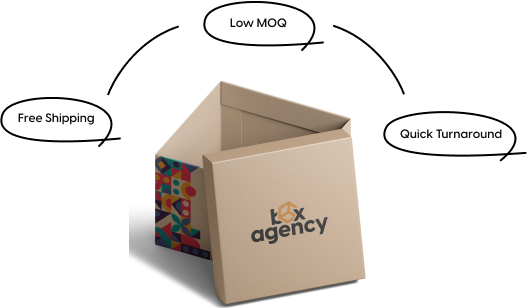Minimalist Packaging Design: Benefits, Examples and Trends
The minimalist design of the packaging is a design approach focusing on simplicity, using limited colors and clean typography. It highlights function and clarity by removing unnecessary factors to highlight the identity of the product and brand. To ensure the clarity of the sides of the packaging where these terms are mentioned, we have created this size guide for easy reference and communication.
It breaks down the advantages that it provides to brands and consumers and has practical examples of famous companies that have managed to apply this style. The goal is to give a clear and brief understanding of the minimalist design of the packaging and its growing role in modern brand efforts and sustainability.
What is Minimal Packaging Design?
The minimum packaging design is an approach to function to make it simple and clear. It uses limited colors, subtle typography and minimum graphics to highlight the product and brand identity. This style eliminates visual dimensions and focuses on essential factors that improve user experience and often support sustainability by reducing material waste.
The minimum packaging conveys the values of the brand through smart design rather than decoration. It is often used in premium brands that respect the awareness and ecological lifestyle to create a strong shelf presence and strengthen consumers’ confidence through honesty and transparency in design.
Why Is Minimalist Packaging Design Gaining Popularity?

The minimalist packaging is gaining popularity due to the shift in consumer values for sustainability and simplicity. It reduces excess and material waste which is suitable for the trend of ecological consciousness. Brands use a minimalist design to create a clean and modern look while communicating transparency and quality.
Consumers respond positively to delicate packaging that highlights the product without distractions. This design approach also supports production and transportation. Minimalist packaging has become a strategic choice for aesthetic appeal and environmental responsibility.
What are the Benefits of Minimalist Packaging Design?

The benefits of the minimalist design of the packaging reduce waste, costs and increase brand image with clean design. Let’s explore the main advantages of the minimum packaging design to understand less is more.
-
Sustainability in Packaging
The sustainability of the packaging reduces the environmental impact by using recyclable and reused materials. It minimizes waste and supports environmentally friendly production methods. Brands apply sustainable packaging to meet the needs of consumers for responsible activities and reduce carbon footprints.
This approach is often associated with simpler concepts using less ink, fewer materials and more efficient production. Sustainable packaging also improves the brand image and is suitable for global environmental goals. It ensures the protection of products while promoting the efficiency of resources and long-term ecological balance.
-
Zero Waste Packaging
Zero waste packaging refers to packaging solutions designed to produce no waste throughout their life cycle. It uses reusable or decomposable materials that leave the minimum environmental impact. The goal is to remove single-use packaging and support the circular economy through the reuse of materials. Packaging brands have no waste to meet the needs of consumers for sustainability and reduce dependence on landfills.
This approach usually includes rechargeable containers and minimalist designs to avoid unnecessary layers. Zero waste packaging supports environmental health while being suitable for modern values of the efficiency of resources and ecological balance.
-
Improved Customer Experience
An improved customer experience means making interactions with a brand easier and valuable. It includes clear communication, fast service and reliable support. Brands focus on customer experience, strengthening trust which encourages loyalty and increasing satisfaction. A positive experience that leads to repeat acquisition and a stronger brand reputation. Companies create long-term relationships with customers that go beyond products or services.
-
Reduced Packaging Costs
The minimalist packaging uses less ink and lighter materials which reduces production and transportation costs. Compact packaging cuts storage and logistics costs. This efficiency improves the profit rate of beneficiaries without affecting the quality of products or brand images. Reasonable design supports cost savings at each step which makes it a strategic choice for brands seeking payment and efficiency.
-
Increased Brand Recognition
The increase in brand recognition means that a brand becomes more familiar and memorable to consumers. The minimalist design of the packaging contributes to it by using coherent and clean images on the shelves and online. Simple logo, limited color palette and clear typography style make brands easy to identify. This visual clarity strengthens confidence and helps consumers connect with the brand. Repeated exposure in contact with a separate and minimalist design will strengthen the brand recall and loyalty of the brand.
-
Premium and Aesthetic Appeal
The premium and aesthetic appeal refers to the visual qualities and the feeling that makes a product feel premium and attractive. Minimalist packaging improves this by using clean lines and quality materials. It makes a strong first impression and strengthens the brand’s confidence. Aesthetic design increases cognitive value and affects purchasing decisions. High-class packaging often uses structural and complete details to stand out.
A simple aesthetic improves the presence and recognition of the shelf. Brands use a minimalist design to convey sophistication and clarity. This approach supports both visual attraction and functional efficiency. It meets the modern expectations of consumers about the beauty and goals in presenting products.
Does Minimalist Packaging Design Increase Sustainability?
The minimalist design of the packaging increases sustainability by reducing waste materials. It focuses on essential elements that avoid excessive layers and components. Brands use ecological materials such as recycled paper or biodegradable options. The minimalist designs also reduce carbon footprints by effectively producing and transporting. This approach supports the goals of the circular economy by promoting reuse and recycling. Sustainable packaging is linked to the values of modern consumers.
Does Minimalist Packaging Design Decrease Packaging Costs?
The minimalist design of the packaging decrease the packaging cost by using fewer materials, simpler designs and effective production methods. It reduces excessive ink demand, decorative elements and some printing layers. This reduces production costs and shipping costs due to lighter and compact packaging. The brand also saves on archives and logistics. Minimalist packaging maintains quality while reducing costs at each stage.
What are the Examples of Minimalist Packaging Designs?
The examples of the minimalist packaging designs uses clean lines and simple typography to create a strong visual effect while reducing excess and decorative materials. You will find below the practical examples of minimalist packaging designs effectively applying this method.
-
Apple
Apple’s electronic packaging is known for its elegant and minimalist design. Products of products that use a white or black background with a delicate brand and are cut exactly to display the product. Packaging emphasizes quality and delicate presentation.
-
Muji
Muji, according to the philosophy of “brand” in its packaging. It uses recyclable materials, simple labels and no useless graphics. Product information is printed directly on the package which keeps everything simple and environmentally friendly.
These examples show that the minimalist design of the packaging can improve the brand identity and the user experience by focusing on essential factors and visual noise deletion.
What are Some Minimalist Packaging Design Ideas?

The minimalist packaging designs reduce repetitive factors while highlighting the brand’s identity and the value of the product. The minimalist packaging design ideas focus on simplicity and visual clarity.
-
Monochrome Color Schemes
Monochromatic color diagrams use black and white or one color for bold and clean images. The idea of a minimalist packaging design like monochromatic templates creates a solid brand identity and timeless appeal.
-
Bare Product Display
Bare product display leaves the shine of the product through transparent concepts or open space. This minimalist packaging idea highlights the quality and strengthens consumers’ trust.
-
Minimum Typography
The minimum typography shows a clear font with limited text. As a minimalist packaging design, it ensures the ability to read and transmit branding effectively without being cluttered.
-
Eco-Friendly Materials
Use recycled or biodegradable materials to reflect sustainability. An idea to design a minimalist packaging that supports both environmental values and visual simplicity.
-
White Space Focus
Concentrated white space pulls into the space to guide attention. A powerful minimalist design idea to reduce the essential elements.
What are the Current Trends in Minimalist Packaging?
The current trends in minimalist packagting is a clean and functional approach that highlights simplicity and clarity. It uses limited colors and minimum graphics to highlight the identity of the product and brand. This design style eliminates unnecessary factors to improve user friendliness and often supports sustainability by reducing material waste.
The minimalist packaging conveys the values of the brand thanks to smart design options rather than decoration. It is widely used by high-end brands that respect the awareness and ecological lifestyle to enhance trust.
What is the Difference Between Minimalist and Luxury Packaging Design?
| Aspect | Minimalist Packaging Design | Luxury Packaging Design |
| Visual Style | Clean and simple with limited colors and typography. | Ornate and detailed often with rich textures and finishes. |
| Material Use | Eco-friendly, lightweight, and reduced materials. | High-quality, premium materials like leather, metal, or thick paperboard. |
| Branding | Subtle branding, often using negative space and monochrome tones. | Strong, visible branding with embossed logos or metallic elements. |
| Cost Efficiency | Reduces production and shipping costs. | Increases cost due to high-end materials and complex design. |
| Shelf Appeal | Stands out through simplicity and clarity. | Attracts attention through opulence and visual weight. |




